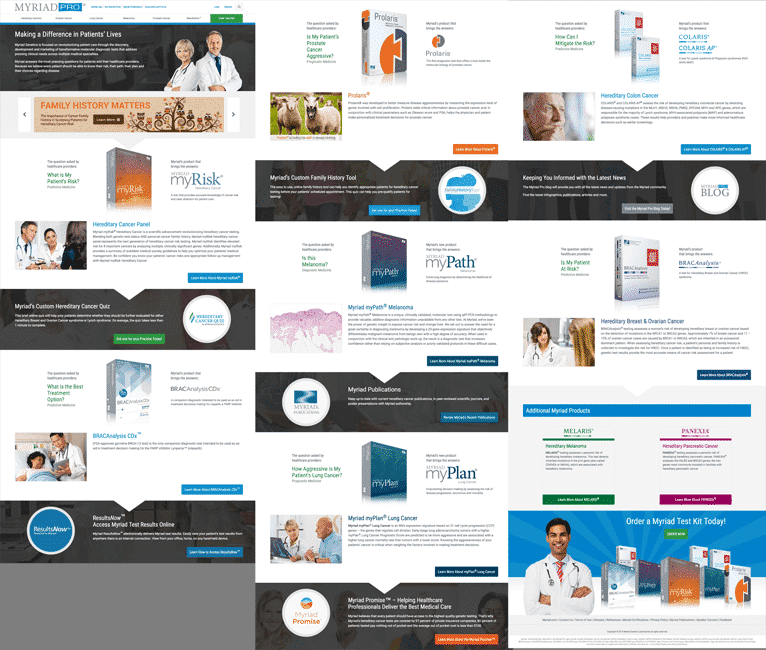How to Design a Higher Education Landing Page that Converts
by Aden Andrus • March 28, 2017
A good higher education landing page is the key to any effective higher education marketing campaign. Unfortunately, most schools struggle to put together a decent higher education landing page.
After all, people click on your ads because they’re interested in enough to learn more. If the page they land on doesn’t convince them that they should give you a call (or fill out your form), they’ll leave.
So, if your landing page (the page they end up on after they click on your ad) isn’t set up for success, you end up paying for a lot of clicks that never turn into higher education leads.
That’s not a good situation.
To put it simply, your higher education marketing campaigns are only as good as the landing pages they send people to, so you need a higher education landing page that is designed to get people to convert. Sound like a challenge? Don’t worry, with this article in hand, you’ll be well on your way to creating a page that consistently drives the leads that you need.
1. Keep Your Messaging Consistent
The key to an effective higher education landing page is messaging consistency. In other words, the messaging of your ad should match the messaging of your landing page.
In fact, messaging consistency is the primary reason why landing pages exist. A home page has to meet dozens (if not hundreds or thousands) of different needs. A good marketing campaign delivers traffic with one specific need.
If that traffic lands on a home page with a hundred different options and messages, what are the odds that they’ll actually find what they’re looking for and convert?
Higher education marketing campaigns perform best when they deliver a consistent experience. If your ad appeals to a certain type of person, your landing page should appeal to that person as well. That way, when they arrive on your page, they think, “This is exactly what I was looking for!” not “Wait, where am I and what am I doing here?”
2. Focus on Them, Not You
Unfortunately, most higher education institutions struggle with egocentrism. Everyone wants to feel good about their school, so schools naturally love to share every achievement and little victory that happens on campus. That’s not necessarily a bad thing. After all, if you, your students, your faculty and your staff all love your school, that kind of loyalty is worth celebrating!
But maybe not on your landing page.
The problem is, most of the people on your site don’t care about most of the things your school loves to celebrate.
Most people struggle with egocentrism, too. Unless they’re looking to major in chemistry, they probably don’t care about your chemistry team’s latest poster presentation or many of the other things you love about your school. Instead, most of the visitors to your site are asking themselves one simple question:
Is this school a good fit for me?
Depending on your school and your marketing approach, the best way to answer that question can vary significantly.
For example, if a comfortable, student-focused environment is a big deal to your target audience, you may want to focus your page on how great your student experience is—not how much fun students have at sports games. In fact, it would probably be best to include testimonials from actual students about their learning experience at your school.
The important thing is to keep the focus on how your school is a good fit for them—not how awesome your university, college or department is.
Now, that being said, no one wants to pay for a lousy education, so it’s always a good idea to include some information about how good your school is, but the focus should be on how your school will help your students…not how awesome your school is.
In addition, your page should address what brought them to your page in the first place. If they clicked on your ad, it’s probably because your ad addressed a problem or need. If your page is focused on how your school solves that problem or need, there’s a good chance they’ll convert. If all your landing page does is tell them that your school is great, they’ll lose interest and leave.
Do you see why messaging consistency is so important?
3. Create a Compelling Call-to-Action
The goal of any higher education marketing campaign is to get people to take action. Depending on your campaign, you might want them to submit a lead form, sign up for a trial period, subscribe to your email list…but your goal is to get them to do something.
But, if you don’t tell people what you want them to do, what are the odds that they’ll actually do it?
A quality call-to-action (CTA) solves this problem. Essentially, your CTA tells your potential customers what they should be doing next. It’s the old, “Submit”, “Sign Up”, “Get My Free Proposal”, “Try Now” button we’ve all seen on countless pages.
However, telling someone to “Submit” and actually convincing them to do it are two very different things. If you want people to act on your CTA, you need to convince them that doing what you want them to do is in their best interest.
With that in mind, your CTA should be a natural extension of your landing page. Remember, they are on your higher education landing page because they’re hoping that your school can solve a problem for them. Your CTA should show them how converting will get them one step closer to solving their problem.
Of course, the right CTA for your landing page will depend entirely on the specific problem or need of your target audience, but if you’ve already created a landing page that is focused on that problem or need, creating your CTA should be easy. Just ask yourself, “If a potential customer read this page and resonated with my content, what would they naturally want to do next?” The answer is your CTA.
4. Keep Things Simple
Often, when you’re creating a higher education landing page, it can be easy to overcomplicate things. There’s a natural temptation to think, “What if my target audience wants to know about X? I better add it to my page.” or “What about Y? That might be a point of concern for potential students…I should probably throw that in, too.”
Before you know it, you have a landing page that looks like this (I split the page into 3 columns so you wouldn’t have to scroll all the way through their whole page):

However, the fact of the matter is, most people don’t scroll very far down your landing page. And, those who do, don’t usually read most of your content.
Remember, your potential customers are on your page because they have a specific problem that they need solved. If your landing page makes it obvious that your business may be able to meet their needs, they’ll convert. If not, they’ll leave.
So, even if your landing page does address that one specific concern that a potential customer might have, but they have to hunt through your page to find the answer, most people won’t take the time to find that answer. The issue might be worth addressing in a separate marketing campaign and landing page, but if you feel like you need to include tons of extra content to get people to convert, you probably don’t know your target audience’s needs and problems well enough.
This applies to forms as well. Longer forms tend to decrease conversion rates, so if you don’t need to know their gender, weight, height, weight, social security number and billing address, don’t ask for it! Keep your forms focused on the information you truly need.
However, keeping things simple doesn’t always mean keeping things short. Picking a college or university is a big deal. If you want them to convert, you may need to really convince them that your school is the perfect fit for them. That could take a lot of words.
But, before you turn your landing page into an essay, ask yourself the following questions:
- Am I overcomplicating things? If you only need a phone number and your recruiting team can resolve any additional questions, focus on getting the phone number.
- Can another medium solve the problem? Sometimes, a video or image can be worth a thousand words of text. If an image can say it better, try an image.
In general, the best higher education landing pages keep things simple. Their content is directly focused on the needs of their visitors and their forms only ask for relevant information. How much content or how long of a form you need will vary from school-to-school or even program-to-program, but a simple, focused page will almost always outperform a more complicated one.
5. Use Social Proof
Finally, people put a lot more stock into what other people say about your school than what you say about your school. After all, you get paid to say good things about your school.
So, if you really want to convince your potential students that you are the school for them, it’s often best to let your current students do the talking.
Testimonials are one of the most compelling elements of a higher education landing page. They give people an opportunity to really get a sense for what it’s like to attend your school.
Here are a few ways to get the most out of social proof:
- Get testimonials from well-known sources. An endorsement from Steve Young means a lot more than an endorsement from Steve Yun. If Steve Young says good things about a bad school, that can have big repercussions for his good name. If Steve Yun endorses the wrong product, well, who is Steve Yun anyways?
- Add more details. Liars avoid the details. Therefore, the more details (location, company name, statistics, case studies, etc) you have, the more believable your testimonial will be.
- Include images. A quote is good. A quote with a picture is better. A video testimonial is awesome.
Social proof is what makes your marketing message meaningful. Without it, your landing page just feels like bragging.
Conclusion
A well-designed, focused higher education landing page can be the difference between a mediocre marketing campaign and a gold mine. Fortunately, by applying the principles in this article to your landing pages, you can create an incredibly compelling landing page for your school.
Incidentally, if you’d like some help putting together some high quality landing pages or would just like some feedback on your existing landing pages, let me know here or in the comments. I’d love to help.
How do you approach higher education landing pages? Are there any tricks you use to improve conversion rates on your pages? Let me know in the comments.





